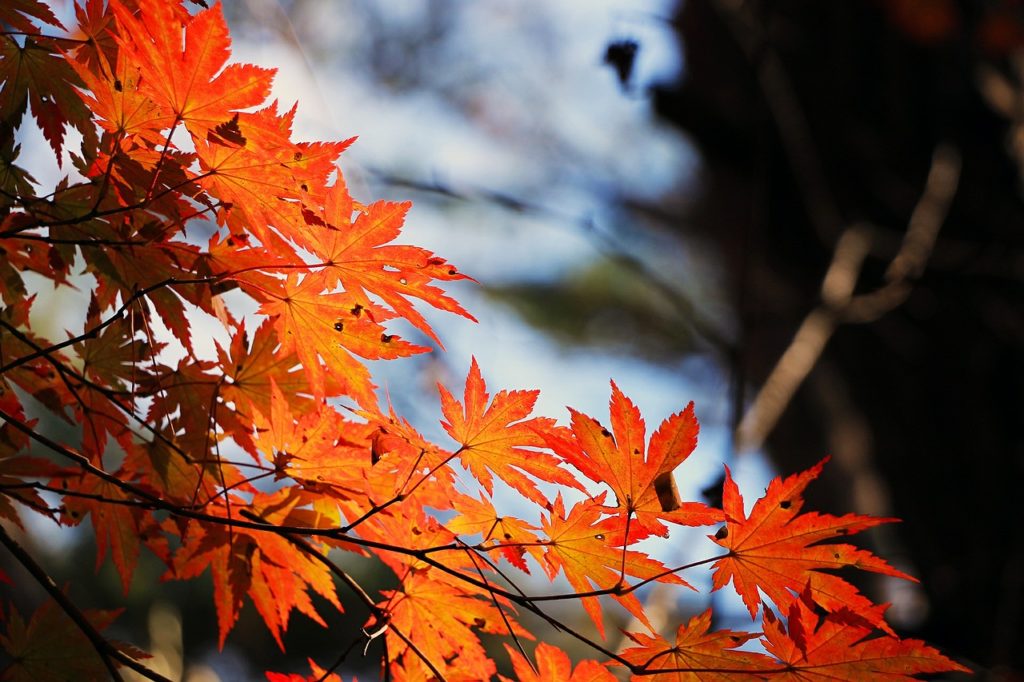This is the second half of a two part series on red maple. The following examines the tree’s root development, soil and topography, damaging agents and pests, allergenic potential, and additional uses.
Introduction
Red maple (Acer rubrum), also known as swamp maple, water maple, Drummond red maple, Carolina red maple, or soft maple, is one of the most widespread deciduous trees of eastern and central North America. The U.S. Forest Service recognizes it as the most common species of tree in the United States. Many of its features are variable in form. This is especially noticeable on the many red maple cultivars available for selection. Red maple’s flowers, petioles, twigs, and seeds are appealing shades of red. Its most distinguishing characteristic is its brilliant deep scarlet foliage in autumn.
Red maple flourishes in a wide range of site and soil conditions; more so than any other tree in eastern North America. Due to its striking features, and adaptability, it is often used as a shade tree for landscapes. Red maple can be considered weedy or invasive. In forests across much of the eastern United States, red maple has been displacing deciduous trees like oaks, as well as pines and hickories.
Root Development
The roots of red maple are capable of adapting to different environments, enabling seedlings to survive in a myriad of settings. Roots are primarily horizontal, forming in the upper ten inches of the soil. In wet locations, red maple seedlings produce short taproots, with large, well-developed lateral roots. On dry sites, seedlings develop long taproots, with significantly shorter lateral roots. Mature trees have woody roots up to eighty feet long. Red maples maintain this characteristic root system adaptability as they mature.
Soil and Topography
Red maple can thrive in a wide range of soil types, more than any other tree in eastern North America. It can withstand soils of various textures, moisture, pH, and elevation. It develops in soils derived from granite, gneiss, schist, sandstone, shale, slate, conglomerate, quartzite, and limestone. On some individuals, chlorosis can occur on very alkaline soils. Red maple develops best on moderately well-drained, moist sites at low to intermediate elevations.
Damaging Agents & Pests
Red maple is susceptible to rot fungi and stem diseases. The fungi Inonotus glomeratus and Oxyporous populinus infect branch stubs, and wounds on the stem. Heart rot is a common affliction of red maple; Phellinus igniarius is one of the leading causes. Red maple is also vulnerable to many leaf diseases, particularly anthracnose, and leaf spot.
Many different insects feed on red maple, though none have the capacity to decimate a healthy tree. Increment boring can cause discoloration, which often results in decay. Decay progresses quickly in red maple. Prolonged infestation can reduce vigor and growth, increasing the tree’s susceptibility to fungal infections. It may also hasten the decline of weakened trees. Borers that feed on red maple include the gallmaking maple borer, maple callus borer, and the Columbian timber beetle. Scale insects that are attracted to red maple include the cottony maple scale, the maple leaf scale, and the oystershell scale. Common leaf feeding moths include gypsy moth, linden looper, elm spanworm, and red maple spanworm.
Red maple is sensitive to fire injury; large trees can be killed by a fire of moderate intensity.
Allergenic Potential
The allergenic potential of red maple varies widely based on the selection of cultivar.
The following cultivars are entirely male, and considered highly allergenic. They have received an OPALS* allergy scale rating of eight or higher:
- ‘Autumn Flame’
- ‘Autumn Spire’
- ‘Columnare’
- ‘Firedance’
- ‘Karpick’
- Northwood’
- ‘October Brilliance’
- ‘Sun Valley’
- ‘Tillford’
The following cultivars are entirely female, and have a low potential for causing allergies. They have received an OPALS* allergy scale rating of three or lower:
- ‘Autumn Glory’
- ‘Bowhall’
- ‘Davey Red’
- ‘Doric’
- ‘Embers’
- ‘Festival’
- ‘October Glory’
- ‘Red Skin’
- ‘Red Sunset’
*The OPALS allergy scale, and its associated ratings are derived from Thomas Leo Ogren’s seminal book: Allergy-Free Gardening: The Revolutionary Guide to Healthy Landscaping.
Additional Uses
- Red maple is suitable for the production of maple syrup. It is similar in sweetness, flavor, and quality to black maple and sugar maple. To obtain the most desirable flavor, red maple must be tapped for syrup before the buds emerge. After sprouting, the chemical makeup of the sap changes, altering its flavor.
- Red maple is a medium quality firewood, possessing higher heat energy per cord than other hardwoods such as ash, oak, cherry, or birch.
- In the lumber industry, red maple is considered a soft maple. The wood is close grained, and it has a soft texture. Although hard maples are generally preferred, high grades of wood from red maple are sometimes used in the manufacturing of furniture.
- Red maple is often used as an important food source by various forms of wildlife. Three of the most common include elk, white-tailed deer, and snowshoe hare. Several butterflies and moths utilize the leaves as food.
- Red maple makes for a vibrant and colorful bonsai plant.
- Rhode Island has selected red maple as its state tree.
Additional Resources:
https://www.na.fs.fed.us/pubs/silvics_manual/volume_2/acer/rubrum.htm
http://www.fs.fed.us/database/feis/plants/tree/acerub/all.html


